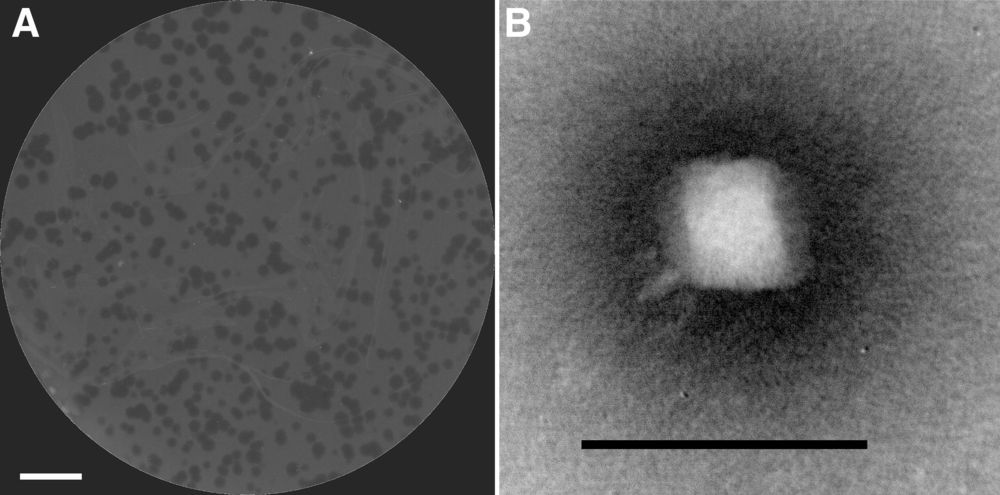Background:Pantoea is a genus within the Enterobacterales whose members encompass free-living and host-associated lifestyles. Despite our growing understanding of the role of mobile genetic elements in the biology, ecology, and evolution of this bacterial group, few Pantoea bacteriophages have been identified and characterized.
https://www.liebertpub.com/doi/10.1089/phage.2019.
Background: Pantoea is a genus within the Enterobacterales whose members encompass free-living and host-associated lifestyles. Despite our growing understanding of the role of mobile genetic elements in the biology, ecology, and evolution of this bacterial group, few Pantoea bacteriophages have been identified and characterized.
Materials and Methods: A bacteriophage that could infect Pantoea agglomerans was isolated from barnyard soil. We used electron microscopy and complete genome sequencing to identify the viral family, and evaluated its host range across 10 different Pantoea species groups using both bacterial lawn and phage lawn assays. The latter assays were carried out using a scalable microplate assay to increase throughput and enable spectrophotometric quantitation. We also performed a phylogenetic analysis to determine the closest relatives of our phage.
Results: Phage vB_PagP-SK1 belongs to the genus Teseptimavirus of the Podoviridae family in the order Caudovirales. The 39,938 bp genome has a modular structure with early, middle, and late genes, along with the characteristic direct terminal repeats of 172 bp. Genome composition and synteny were similar to that of the Erwinia amylovora phage, vB_EamP-L1, with the exception of a few loci that are most similar to genes of phage infecting other members of the Enterobacteriaceae. A total of 94 Pantoea strains were surveyed and vB_PagP-SK1 was found to infect 15 Pantoea strains across three species, predominantly P. agglomerans, along with one Erwinia billingiae strain.
